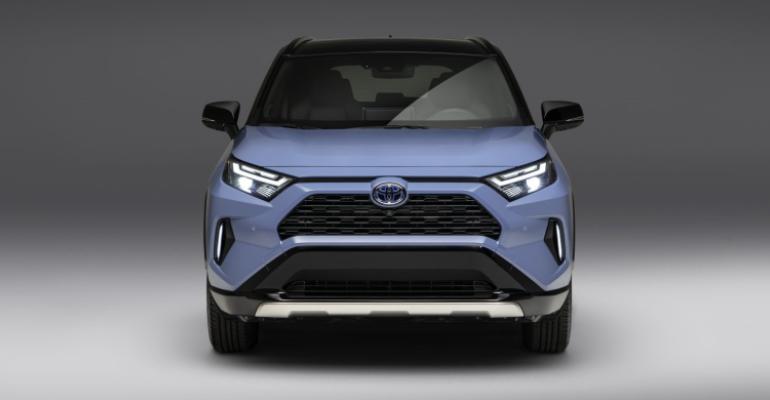The great American vehicle-inventory shortage has been good in an ironic way for auto dealers, particularly those selling Toyotas.
“Our dealers have experienced the three most profitable years in history,” says Jack Hollis, executive vice president of sales for Toyota’s U.S. unit.
Dealers can thank the chronically scant stock situation for that high per-vehicle profitability. The lower the lot inventories, the higher the prices, per supply-and-demand 101.
But it is not as simple as that, as evidenced by the main point Toyota dealers tell Hollis when he talks with them each day. Aren’t they OK with lean inventories caused by a protracted microchip shortage that has cut into auto production?
“Our dealers tell us exactly how they feel,” Hollis (below, left) tells Wards. “And they’re telling us they want more inventory.”
 But why, if the current level is reaping big profits for them?
But why, if the current level is reaping big profits for them?
“They know demand is high, and they’d be losing customers without getting more product to sell,” Hollis says. “There is a point where you can increase inventory and still maximize profits. They still think they can keep profits high even if they are getting more vehicles.”
Industrywide, the national days’ supply is about 50. But the U.S. days’ supply for Toyota is a strikingly low five. For Toyota’s Lexus luxury brand, it is 10. Currently, there are about 20,000 Toyotas and 10,000 Lexus models on the ground.
Toyota sold 1.9 million units in the U.S. last year. Lexus dealers delivered 300,000.
“We started with 30,000 combined units on the ground and ended with 30,000,” Hollis says. “We sold 100% of what we wholesaled. All I can sell is at dealerships.”
Inventory levels are notably low for non-luxury brands Toyota, Kia, Subaru, Honda, Hyundai and Volkswagen. Luxury brands at the low end include Land Rover, BMW, Lexus, Porsche, Genesis and Mercedes-Benz.
That’s in marked contrast to 15 or so years ago when dealer lots were bloated with stock as automakers overproduced to keep the factories running. It led to deep discounting by dealers. In today’s sellers’ market, they’re charging MSRP and above.
Hollis says he tracks both headwinds and tailwinds. Right now, he calls the two equal in strength.
Pent-up consumer demand is high with about 2 million unproduced vehicles that could be sold. “That’s a strong tailwind” as the inventory shortage slowly abates, although the supply chain remains fragile.
But the negative headwinds include a potential recession (some economists say it’s already started) and inflation that’s driving up prices.
Hollis foresees the industry average transaction price, which is $49,000 today ($40,000 for Toyota), will surpass $50,000 soon. “How high in the $50,000s it will go, I don’t know.”





